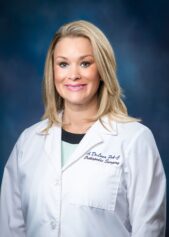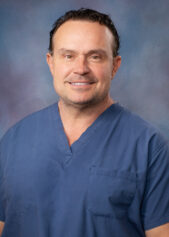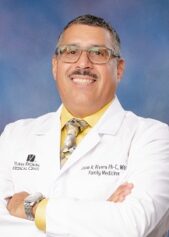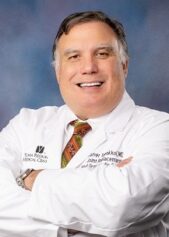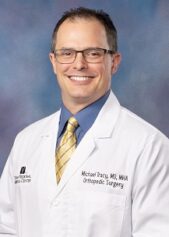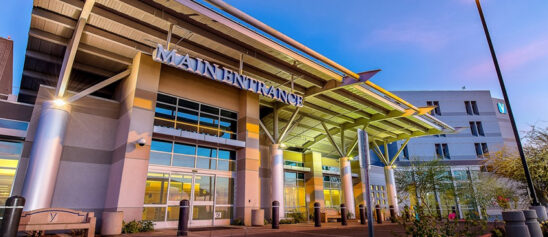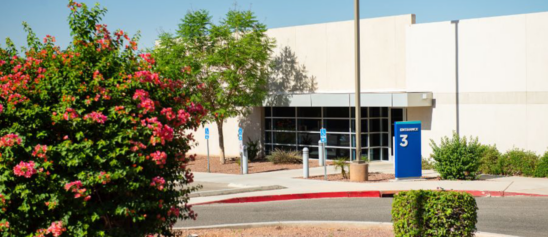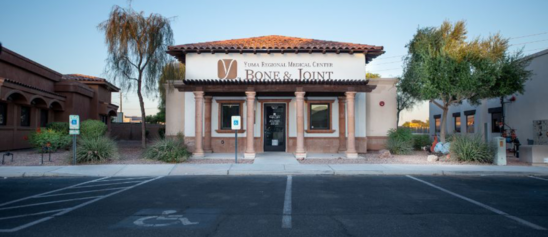Find expert orthopedic care for sports injuries, joint pain and more.
Get the care you need from the orthopedic specialists at Yuma Regional Medical Center. Your provider can help you work toward healing by providing optimal care for the diagnosis, treatment and management of bone and joint problems.
Whether you need to recover from an injury, return to work or get back on the playing field, Yuma Regional’s specialists work with you to carry out your custom treatment plan. The team includes orthopedic surgeons, non-surgical sports medicine doctors, physician assistants, nurses and physical therapists. We’ll work with you, and your other medical providers, to get you through a successful recuperation.
Providers
Our team will help you care for your injuries, aches and pains so you can return to the life you enjoy.
Locations
Conditions and Services
Thanks to our providers’ excellent training, Yuma-area residents have access to a complete range of surgical and non-surgical orthopedic services to treat various conditions.
- Back Pain
- Bicep Rupture
- Carpal Tunnel Syndrome
- Congenital Disorders
- De Quervain’s Tendinitis
- Dislocations
- Dupuytren’ Contracture
- Elbow Fractures and Injuries
- Finger Fractures
- Ganglion Cysts
- Hip Pain
- Joint Pain
- Knee Pain
- Mobility Issues
- Navicular Fracture
- Rotator Cuff Tendinitis
- Shoulder Instability, Pain and Injuries
- Non-surgical Spine Injuries
- Sports Injuries
- Sprains and Strains
- Trauma and Fractures
- Trigger Finger
- Wrist Injuries
Our medical team will create an individualized treatment plan designed to minimize complications and help you get back to life as quickly as possible. Services include but are not limited to:
When you undergo total hip replacement surgery at Yuma Regional Medical Center, your surgeon will replace the damaged bone and cartilage with prosthetic components by using one of the following procedures, based on your specific situation:
Anterior Approach – For this minimally invasive procedure, the surgeon accesses the hip joint from the front of the upper thigh and uses smaller incisions and more specialized instrumentation to minimize muscle and tendon disruption. This results in a less traumatic surgical experience for the patient, a shorter hospital stay and quicker recovery. Anterior hip replacement allows patients to immediately bend their hip freely and bear full weight when comfortable.
Posterior Approach – This approach to hip replacement has been used in the United States for many years and provides the surgeon with a good view of the hip structure to aid in the placement of the implants. To perform this procedure, the surgeon will make an incision at the back of the hip and cut through muscles and other soft tissue in order to access the hip joint.
Partial Knee Replacement – In this minimally invasive procedure, the surgeon will make a small, 2-3 inch incision and remove only the diseased portion of the knee and replace it with an artificial component called an implant or prosthesis. Partial knee replacements are performed when only one or two sections of the knee need to be replaced, either the inside (medial) part of the knee, the outside (lateral) part, or the kneecap. Compared to total knee replacement procedures, the benefits of partial knee replacement are a smaller incision and scar, less blood loss, a reduced hospital stay, decreased pain and a quicker rehabilitation/recovery time. Our surgeons use advanced technology called the MAKOplasty® Robotic Arm to perform this procedure. Before surgery, a computed tomography (CT) scan is taken, which the RIO system uses to create a virtual 3-D anatomical model of your knee. This model allows the surgeon to plan the placement and alignment of your knee implants prior to surgery. Once the surgical plan is finalized, it is programmed into the RIO, which creates a “safety zone” for bone removal. During surgery, the surgeon controls the robotic arm and is assisted by computer imaging that helps ensure precise placement of the implant. Due to this precise placement, there may be less pain for the first eight weeks after surgery as compared to manually-placed implants.
Total Knee Replacement – This procedure involves replacing the damaged bone and cartilage in the knee joint with components made of ceramic alloys and plastic. The benefits of a total knee replacement are reduced joint pain, increased leg strength, improved quality of life and years of easier movement.
Reverse shoulder replacement has revolutionized the treatment of massive rotator cuff tears. The unique procedure reverses the anatomy of the shoulder so that the ball is attached to the shoulder blade and the socket is placed on top of the upper arm bone. By reversing the normal anatomy, the deltoid muscle, one of the stronger shoulder muscles, is given the ability to raise the arm.
The shoulder system used by the surgeons at Yuma Regional Medical Center is the next generation in reverse shoulder prosthesis, offering unmatched flexibility. Most candidates for shoulder replacement are in extreme pain, have almost no shoulder flexibility and have tried various treatment options, oftentimes including primary shoulder replacement. Reverse shoulder replacement is designed to alleviate their pain and improve mobility so they can return to performing the activities of daily living.
